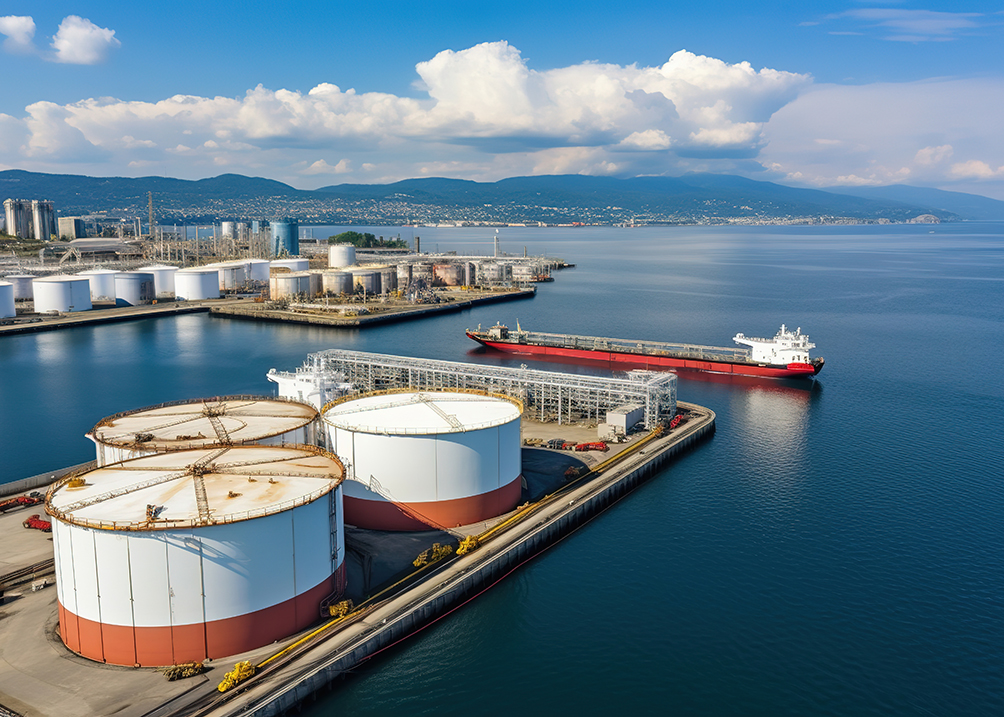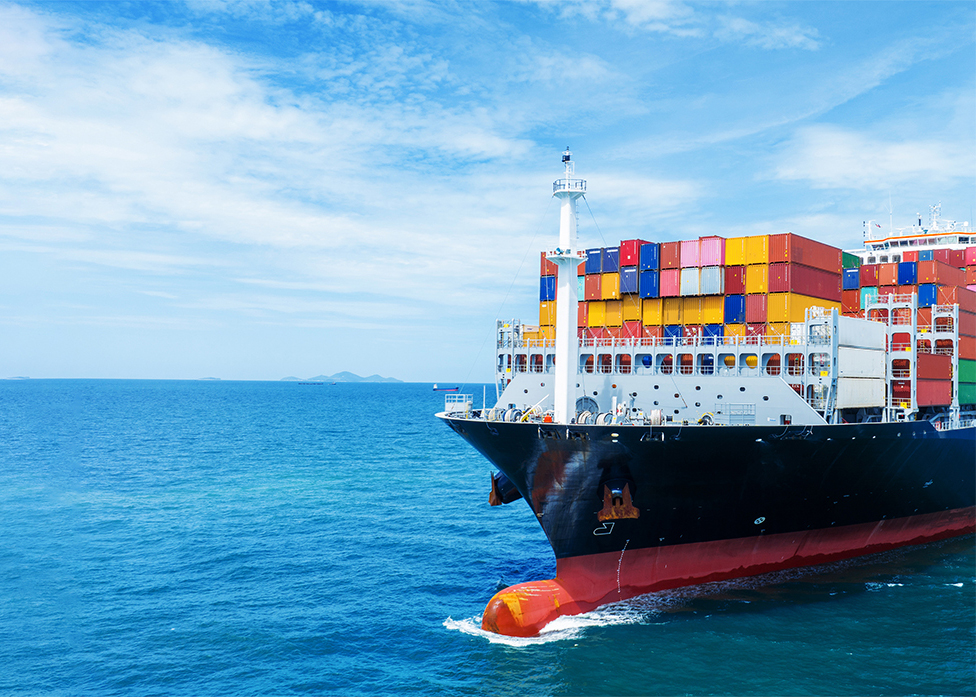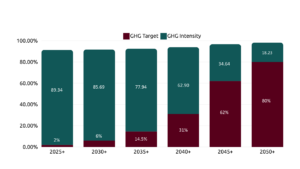
Penalty Calculations under FuelEU Maritime


The FuelEU Maritime regulation aims to reduce greenhouse gas (GHG) emissions from the maritime sector by mandating strict GHG intensity limits and shore power requirements for ships over 5,000 gross tonnage engaged in commercial passenger or cargo transport. The GHG intensity limit, expressed in grams of CO2 equivalent per megajoule (gCO2 eq/MJ), will be progressively tightened, targeting an 80% reduction by 2050 compared to a reference value of 91.16 gCO2 eq/MJ. The specific annual reduction targets are set at 2% for 2025, 6% for 2030, 14.5% for 2035, 31% for 2040, and 62% for 2045.

Type and Timeline for implementation of the penalties:
Non-Compliant with GHG Intensity: The penalties for non-compliance with GHG intensity requirements are applicable for the reporting period starting 1 January 2025. This is when companies must begin to meet the limits on the yearly average GHG intensity of the energy used on board their ships.
GHG Intensity Penalty:
Where
GHGTarget = GHG Intensity target for the reporting year.
GHGActual = GHG Intensity achieved during the reporting year.
Energy per fuel type: Mi (Mass of Fuel used) x LCVi (Lower Calorific Value as per regulation)
Non-Compliance with RFNBO Sub target: The Renewable Fuels of Non-Biological Origin (RFNBO) sub target aims to enhance sustainable fuel use in the maritime sector, with a 2% target for RFNBO implementation starting 1 January 2034, contingent on monitoring results showing less than 1% usage in 2031. To incentivize early adoption, a reward factor of 2 will apply from 1 January 2025 to 31 December 2033, allowing energy from RFNBO to be counted as double in GHG intensity calculations. This framework encourages ship operators to integrate RFNBO into their fuel mix, facilitating a transition to more sustainable maritime practices.
Penalty for RFNBO:
Where:
CBRFNBO: This is the value of the compliance balance for RFNBO. It represents the difference between the required and the actual use of RFNBO on board the ship.
41,000: This is a constant that represents the energy equivalent of 1 metric ton of Very Low Sulphur Fuel Oil (VLSFO), which is equivalent to 41,000 MJ.
Pd: This is the price difference between RFNBO and fossil fuel compatible with ship installation. It reflects the additional cost incurred by using RFNBO compared to traditional fossil fuels.
Non-Compliant Port of Call (OPS): A non-compliant port call under the FuelEU Maritime regulation occurs when a ship does not meet the established requirements related to Onshore Power Supply (OPS) and greenhouse gas (GHG) intensity limits. This regulation primarily targets containerships and passenger ships, with Member States having the discretion to extend these obligations to other vessel types. Starting from 1 January 2030, ships berthed at ports with OPS infrastructure must connect to it, or they will be considered non-compliant. Exceptions to this requirement may apply if the ship could not be aware of OPS unavailability or if the OPS were incompatible with the ship’s systems.
OPS Penalty = € 1.5 × Total Electrical Power Demand × Total number of hours
Pre-requisites for Penalty Calculations:
GHG Intensity Calculation
For the Reporting Period 2025, Let us take an example of a containership with 100% voyages inside the EU, consuming 13,700 mT HFO and 1,600 mT MDO per annum for understanding the potential penalties for FuelEU Maritime.
The GHG intensity of the energy used on board a ship is calculated using the following formula:
| Main | Aux | ||||
| Fuel Type | HFO | Fuel Type | MDO | ||
| Fuel Consumption | 13,700 | MT per year | Fuel Consumption | 1,600 | MT per year |
| Well-to Tank | Well-to Tank | ||||
| CO2eq | 13.500 | gCO2eq/MJ | CO2eq | 14.400 | gCO2eq/MJ |
| LCV | 0.0405 | MJ/gFuel | LCV | 0.0427 | MJ/gFuel |
| RWD | 1.0 | RWD | 1.0 | ||
| Main | Aux | ||||
| Fuel Type | HFO | Fuel Type | MDO | ||
| Fuel Consumption | 13,700 | MT per year | Fuel Consumption | 1,600 | MT per year |
| CO2eq WtT | 13.500 | gCO2eq/MJ | CO2eq WtT | 14.400 | gCO2eq/MJ |
| LCV | 0.0405 | MJ/gFuel | LCV | 0.0427 | MJ/gFuel |
| Tank to Wake | Tank to Wake | ||||
| CO2eq TtW | 3.163 | gCO2eq/gFuel | CO2eq TtW | 3.255 | gCO2eq/gFuel |
| Cf (CO2) | 3.1140 | gCO2/gFuel | Cf (CO2) | 3.2060 | gCO2/gFuel |
| Cf (CH4) | 0.00005 | gCH4/gFuel | Cf (CH4) | 0.00005 | gCH4/gFuel |
| Cf (N2O) | 0.00018 | gN2O/gFuel | Cf (N2O) | 0.00018 | gN2O/gFuel |
| GWPCO2 | 1 |
| GWPCH4 | 28 |
| GWPN2O | 265 |
Where PWind is the available effective power of the wind-assisted propulsion systems and corresponds to feff * Peff as calculated in accordance with the 2021 guidance on treatment of innovative energy efficiency technologies for calculation and verification of the attained energy efficiency design index (EEDI) and energy efficiency existing ships index (EEXI) (MEPC.1/Circ.896)
PProp is the propulsion power of the ship and corresponds to PME as defined in the 2018 guidelines on the method of calculation of the attained EEDI for new ships (IMO resolution MEPC.364(79)) and the 2021 guidelines on the method of calculation of the attained EEXI (IMO resolution MEPC.333(76)). Where shaft motor(s) are installed, PProp = PME + PPTI(i),shaft.
| Reward factor for wind-assisted propulsion – WIND (fwind) | Pwind / PProp |
| 0.99 | 0.05 |
| 0.97 | 0.1 |
| 0.95 | >= 0.15 |
Penalties for exceeding the GHG intensity target are calculated according to Article 23(2) and Annex IV of the FuelEU Maritime regulation.
| Input | ||
| GHG Target | 89.34 | gCO2eq / MJ |
| GHG Actual | 91.49 | gCO2eq / MJ |
| Fuel Consumption | 13,700 | HFO mT per year |
| Fuel Consumption | 1,600 | MDO mT per year |
| LCV HFO | 0.0405 | MJ / gFuel |
| LCV MDO | 0.0427 | MJ / gFuel |
| Shore power Ek | 0 | |
| Output | ||
| Compliance Balance | -1,124,607,500 | gCO2eq |
| FuelEU Penalty | €857,105.81 | € / year |
Where
CBRFNBO = Compliance balance in MJ of RFNBO subtarget referred to in Article 5(3)
= Annual sum of energy used from RFNBO and/or from fuels providing equivalent GHG emissions savings referred to in Article 5
Non-Compliant Port of Call (OPS Penalty): In addition to penalties for GHG intensity non-compliance, ships that fail to use OPS at ports equipped with such facilities are also subject to penalties. The penalty for not using OPS is calculated based on the ship’s total electrical power demand and the total hours of non-compliance.
Example Calculation: Assume a ship with a total electrical power demand of 500 kW did not use OPS for 30 hours while at berth. The penalty would be calculated as follows:
OPS Penalty = € 1.5 × Total Electrical Power Demand × Total number of hours
OPS Penalty = € 1.5 × 500 kW × 30 h = €22,500
AFIR Ports refer to ports designated under the Alternative Fuels Infrastructure Regulation to provide the necessary infrastructure for alternative fuels, including Onshore Power Supply (OPS). These ports are required to install and maintain infrastructure that allows ships to connect to OPS while moored, thereby reducing emissions from ships at berth.
P.S. Please note that penalties for non-compliant port calls (OPS) will be implemented for containerships in 2030.
The primary responsibility for paying FuelEU penalties lies with the ship’s company. This includes ensuring compliance with all regulatory requirements, such as meeting GHG intensity targets and using Onshore Power Supply (OPS) systems where mandated. The ship’s company is accountable for any shortfalls and associated penalties that arise from non-compliance. While the company can enter into contractual agreements with commercial operators, charterers, or fuel suppliers to share or transfer the liability for penalties, the ultimate responsibility remains with the ship’s company.
Penalties must be submitted to the designated administering authorities of the Member State where the ship is registered or where it operates. These authorities are responsible for enforcing compliance with the FuelEU Maritime Regulation and for collecting penalties from non-compliant ships. The penalties are calculated annually based on the verified data submitted by the ship’s company as part of their compliance report.
Failure to pay the required, has serious repercussions. If penalties are not paid on time, the ship will not receive a valid FuelEU document of compliance. This document is essential for the ship’s legal operation within EU ports and waters. Without this document, the ship may face administrative sanctions, including:
To avoid these significant consequences, it is imperative for ship companies to ensure timely payment of all penalties and to maintain compliance with the FuelEU Maritime Regulation. This not only helps in avoiding financial and operational repercussions but also supports the EU’s broader climate objectives by promoting sustainable and environmentally responsible maritime operations.
Normec Verifavia is an independent emissions verifier verifying emissions under EU MRV, UK MRV, IMO DCS, CII, EU ETS, FuelEU Maritime since the implementation of these regulations and have verified over 2000+ vessels from 180+ shipping companies across 40+ countries. Our innovative emissions dashboard can assist you in generating FuelEU Monitoring Plan fetching common sections from EU ETS Monitoring Plan and the functionality to clone FuelEU Monitoring Plans across your fleet which is currently not available on THETIS. Contact us today for today for a demonstration of our emissions dashboard connected with 8+ IT Systems for seamless emissions verification and compliance.